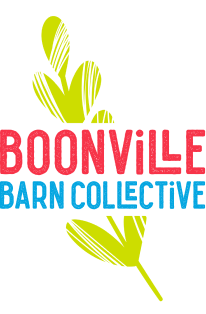I’ve officially declared February as Bean Month here at Boonville Barn Collective.
Why? Well, it’s cold, rainy, the days still feel quite short, I need something to look forward to, and I really like beans (Yes, I do have a group message with friends called Beanspiration where we share different things we’ve cooked and general important bean updates).
Every Sunday in February you’ll be able to learn about a specific bean we grew as well as a few recipes to try that week (or during the month). If you’ve never cooked dry beans before, we’ve got you covered! Scroll on to read how I cook my beans on the stove.
We’ve put together a bundle with a bag of each of the beans we will cover this month if you want to cook along with us as well. And if you’ve got beans in your pantry, it's a great time to rip open the bags and start cooking them! If you choose to join me in Bean Month, please send me messages about what you're cooking and what you think of the recipes/beans. We really do love hearing from you.
First up is the Zolfini Bean, one we’ve been growing for awhile.
The Zolfini Bean: The Italian Bean of Resistance
Zolfini beans are a Slow Food Ark of Taste heirloom Italian bean from Tuscany. Historically grown in the Arezzo province, these small beans get their name from their sulphury yellow hue (zolfo is Italian for sulphur). They are also known as fagiolo del cento, or the hundred bean, as they are historically sowed on April 11th - the 100th day of the year.
Zolfini beans have been used as a symbol of resistance to the globalization and industrialization of the food system. The beans played a role against neoliberal bureaucrats during the 1999 Battle in Seattle as they were used to express “a need to protect genetic heritage and regionalized biodiversity against the onslaught of global free trade and cultural hegemony." (Uprising Organics)
“In 1999, Paolo De Castro, Italian minister of Agriculture, waved a small bag of Zolfini beans in front of the World Trade Organization bureaucrats in Seattle. He wanted to focus attention on a threatened and endangered legacy, culture and tradition. Those were legendary beans... This tiny pulse bears a huge responsibility, thus becoming the flagship of the battle against the heartless products of the food corporations: the beans from La Penna versus plastic McDonald’s burgers. An unequal battle, but fruitful nevertheless.”
Excerpt from Viaggio in Toscana: Alla scoperta dei prodotti tipici by Andrea Semplici
Honestly, give it up for the Zolfini bean. It’s an honor to grow these on our farm.
Not only are they a fitting bean for the current state of our food system, Zolfini beans are absolutely delicious. They have incredibly thin skins that seem to disappear when cooking and hold their shape even when cooked for extended periods of time.
Traditionally they are prepared with a bit of garlic, sage, and a big glug of olive oil. But you can use them in place of Canellini beans, Navy beans, Great Northern beans, Baby Lima beans, Butter beans, Sorana beans, or any other white beans.
Recipes for the Week: Zolfini Beans
It is pretty easy for Zolfini beans to find their way into any soup you are cooking. Here's 2 soup option, a thicker ~stew~ option, and a very much not soup option for this week! All recipes are available for free online.
I'm starting the week by making a pound of zolfini beans today that should be enough for what I'm cooking this week.
Minestra d'Ville from Boonville Barn: Here's one from our recipe archives that can be made with whatever similar vegetables you have on hand. I love the croutons that get added to it.
Ribollita from Serious Eats: Similar in flavor to the Minestra d'Ville, this is a Hearty Tuscan Bean, Vegetable and Bread stew that starts out as a Minestrone soup and then gets bread added to make it more like a porridge or then fried up in a pan to dry it out and eaten more as a pancake. Yes a soup pancake. This is how I will convince my soup-averse husband to eat soup more than once this week!
Sauerkraut and White Bean Soup from Rancho Gordo: This soup was a surprise when I first made it. The sauerkraut at the end adds a delicious tang. I recommend a bit of hot sauce too.
Pizza Beans from Smitten Kitchen: A favorite that comes together quick especially if you have homemade tomato sauce (or a storebought jar) in your pantry. We're topping ours with pepperoni and are making Calabrian Chile Garlic Knots on the side (sometimes we make garlic bread to go with it too).
How to cook Dry Beans
Cooking beans takes quite minimal effort (yes more effort than opening a can of beans, but not that much more!) and you’ll end up with a better result. You’ll see a lot of information about the importance of soaking beans overnight, but this is only something I’ve found is necessary when the beans are many years old or are a generic grocery brand (you really don’t know how long they’ve been around!). Our beans were all harvested about 4 months ago - this is really fresh. And since they are so fresh, I think they turn out worse if you soak them. I also don’t like to cook our beans in a pressure cooker (the only exception being tepary beans) because the result is inconsistent. I tend to cook a whole pound of beans and use them throughout the week but I also recognize that is a bit aggressive. Cooking half a pound to start works well too. Here’s what I do.
- Rinse beans and remove any debris. Add beans to a pot (I like a dutch oven), cover with about 3 inches of water and turn heat to high. You can add aromatics like herbs, chopped onion, garlic, or dried chiles, but the majority of the time I just make the beans plain so I can use them in multiple dishes.
- Bring beans to a rolling boil and let them boil for 15 minutes.
- Reduce heat to a simmer and cook until beans are tender. You’ll probably have to add more water as the beans cook (I like to have an electric kettle of hot water nearby while cooking them). You'll want them to be under at least 2 inches of water the whole time.
- Cooking time depends on the bean but can be anywhere from about 45 minutes total to 1.5 hours. I would start tasting them at the 45 minute mark. You want to be able to eat about 5 beans in a row and have them all be fully cooked to ensure the pot is ready - That’s a Samin Nosrat tip!
- Take beans off the heat and let them cool completely. Store the beans in their cooking liquid in the fridge and add them to different dishes throughout the week. If you have cooked too many beans for the week, you can freeze the beans in their cooking liquid and save for a later date.
|
A note on salting your beans: I like to add salt to the bean pot in the middle of cooking. Add the salt too late and you’ll just end up with salty water for the beans to be in. Add too early and it can affect the cooking time. If you can time it right (around 35ish minutes with most of our beans), you’ll be able to add salt when the beans are about halfway to ⅔ of the way cooked so that the salt gets taken in by the beans while they finish.
|



